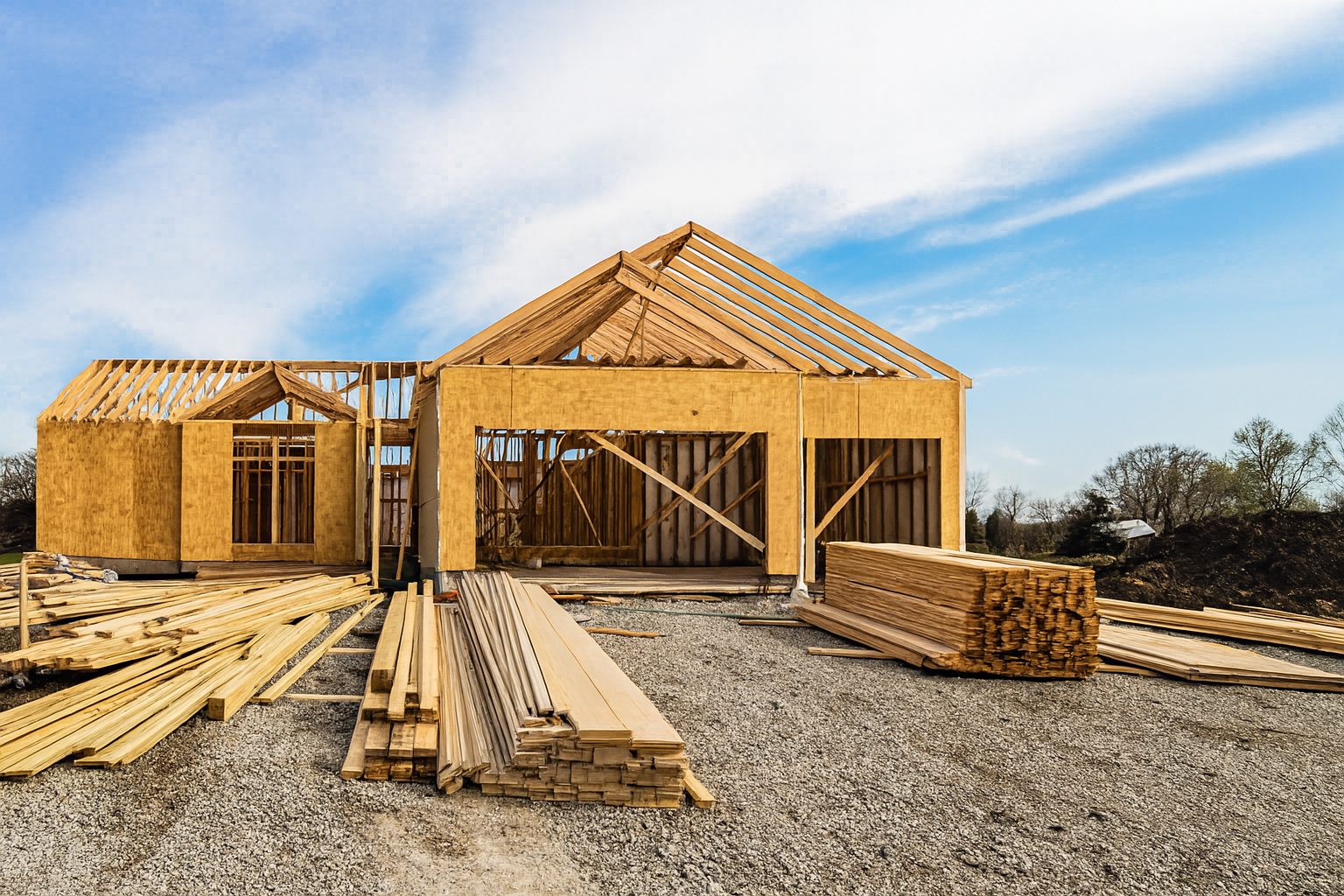On June 12th, the Sussex County Land Use Reform Working Group held a significant meeting convening officials, planners, farmers, developers, and residents to cover the ways that they recommend that the county should manage rapid growth while maintaining its coastal and rural identity.
The meeting was part of the broader Land Use Reform Working Group initiative and focused on farmland preservation, housing diversity, infrastructure coordination, and long-term planning through growth zones.
Below is a summary of some of the key discussions and draft recommendations presented thus far during the session.

Image Generated by AI
Define Missing Middle Housing Types
The meeting addressed the increasing demand for diverse housing options in Sussex County, particularly the role of “missing middle housing”—like duplex, triplexes, stacked flats, and cottage courts that fall between single-family homes and large apartment complexes.
Key draft recommendations included:
- Defining missing middle housing types clearly within the zoning code.
- Allowing such housing types by right in select zoning districts to simplify approval processes.
- Reducing lot width minimums and setback requirements to accommodate smaller-scale developments.
- Increasing height limits where appropriate to enable denser, more land-efficient housing.
- Encouraging multifamily housing in areas with existing infrastructure and proximity to jobs and services.
These measures aim to diversify housing options and create more predictable zoning outcomes for developers and communities alike.
Infrastructure Planning Aligned with Growth
Participants widely agreed that current infrastructure, especially transportation systems, is inadequate to support the county's growth.
A coordinated approach was proposed to ensure infrastructure keeps pace with development.
- A phased infrastructure strategy was recommended, requiring transportation upgrades to be planned and funded alongside new residential development.
- The draft recommendations emphasized that no major housing expansion should occur without matching investments in roads, utilities, and public services.
- Growth areas would be prioritized for infrastructure upgrades to prevent congestion and maintain quality of life for existing residents.
This strategy aims to align local land use decisions with state investment priorities and funding availability.

Image Generated by AI
Using Growth Zones to Guide Future Development
The concept of “growth zones” was a key part of the June 12th meeting, promoted as a planning tool to direct development where infrastructure can support it and preserve rural areas elsewhere.
Key discussion points included:
- Developing a clear set of criteria for what constitutes a growth zone—such as access to roads, utilities, and job centers—before drawing boundaries.
- Avoiding premature mapping of growth zones without full public input to ensure transparency and fairness.
- Using growth zones as a framework to guide future comprehensive plan updates and zoning reforms.
- Studying regional models from other counties that successfully used growth areas to manage density and infrastructure planning.
Participants generally agreed that growth zones could help focus development, reduce sprawl, and preserve the county’s character if designed and implemented thoughtfully.
Next Steps Following the Meeting
The meeting concluded with a commitment to continue refining the draft recommendations through additional work sessions and targeted stakeholder engagement.
While no final decisions were made, the meeting laid the groundwork for future discussions and provided a structured foundation for future meetings.
County planners emphasized that further feedback would be solicited in the weeks following the meeting, with the goal of producing actionable proposals later in the summer.
Future sessions will delve deeper into the additional recommendations and what they mean potentially for implementation in Sussex County.
You can find all of the draft recommendations to date here.
Since the June meeting, the working group held a follow-up session on July 10th and July 24th.
Join the Conversation
Want to help shape the future of Sussex County? We invite you to share your thoughts, questions, or concerns in the comments section.
Stay tuned to our blog for updates on ongoing developments in land use, zoning, and infrastructure across the county!
All referenced documents and meeting materials are available through Sussex County’s official website and public meeting archive.
Source: Sussex County


